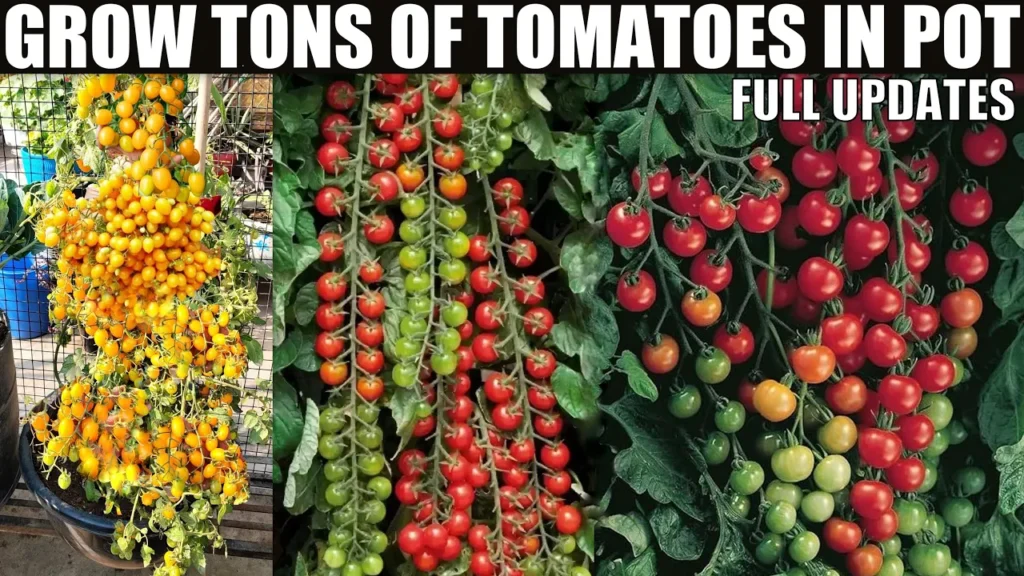
How to Grow Tomatoes like a pro! Tending plants becomes one of the best courses of action if you begin tomatoes with it. These straightforward directives will arm you with the necessary skills to obtain the tomatoes from your backyard and add them to food for better taste and freshness.
Table of Contents
- Starting with Quality Seeds
- Preparing the Seed Starter Mix
- Planting the Seeds
- Germination and Care of Seedlings
- Transplanting Seedlings to Larger Pots
- Choosing the Right Container
- Deep Planting Technique
- Watering and Soil Moisture Management
- Staking Tomato Plants
- Maintaining Plant Health
- FAQ: Common Questions About Growing Tomatoes
How to Grow Tomatoes – Starts with Quality Seeds
The primary step to starting off your adventure of growing tomatoes is to prioritize excellent seeds. Robust seeds are fundamental for a prosperous harvest. Seek well-known agencies that provide organic or heirloom rind cultivars for optimal outcomes.
The first step in choosing the right seeds is determining the tomato type you are going to grow-beefsteaks, cherry tomatoes, or Roma tomatoes which are the ones available. Every variety is different in its own way.
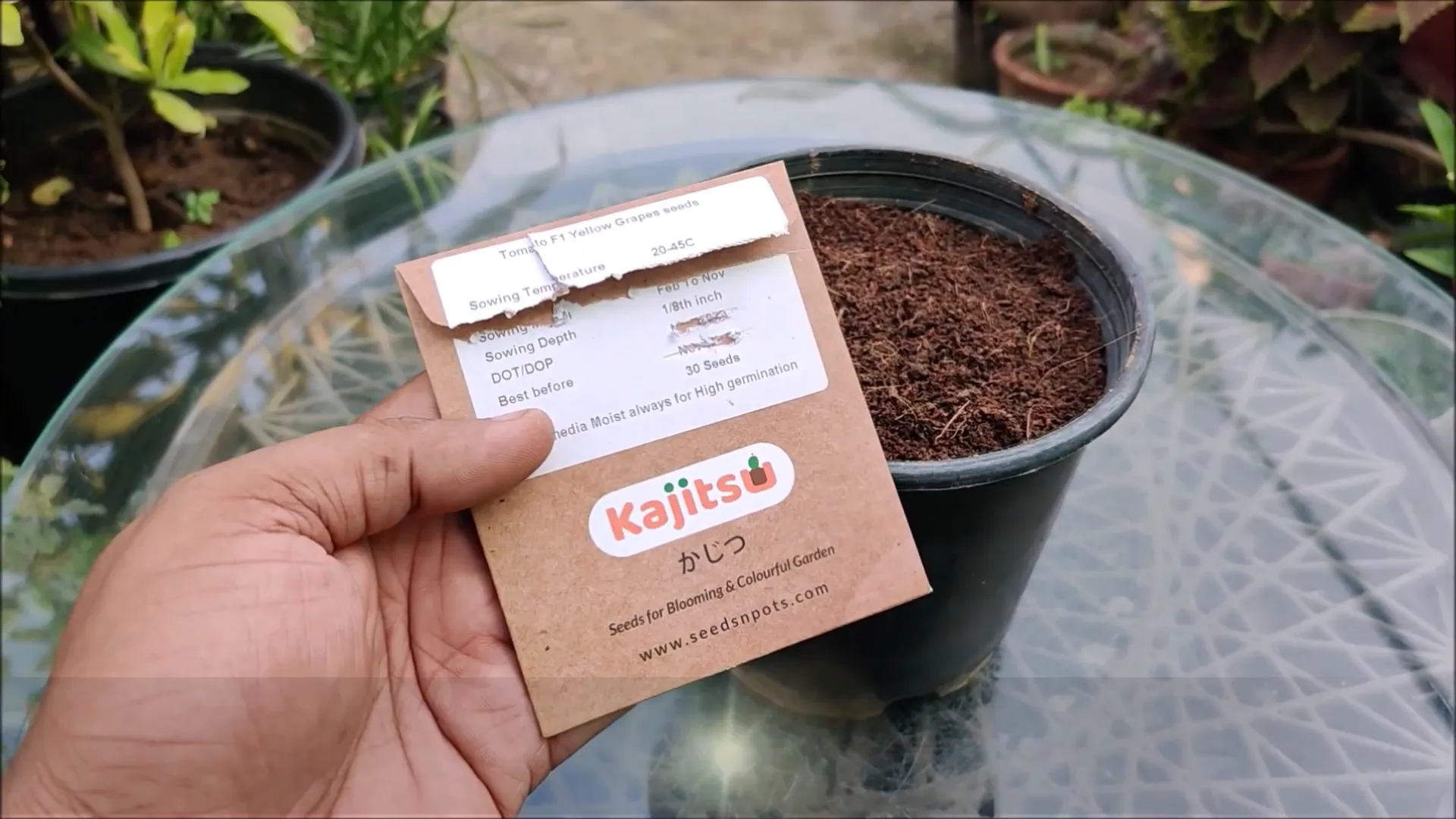
Preparing the Seed Starter Mix
For the healthy development of your tomato seeds, the basic step is the use of a ready seed starter mix. One such mix can be prepared by taking 40% garden soil, 30% cocoa peat, and 30% compost. This mixture contains the right nutrients, and the drainage is the best.
To guarantee it is ready to support the planting of germination, first make sure the soil is moistened. A mix prepared correctly will lead to a good root system development, which is essential in the beginning of growth.
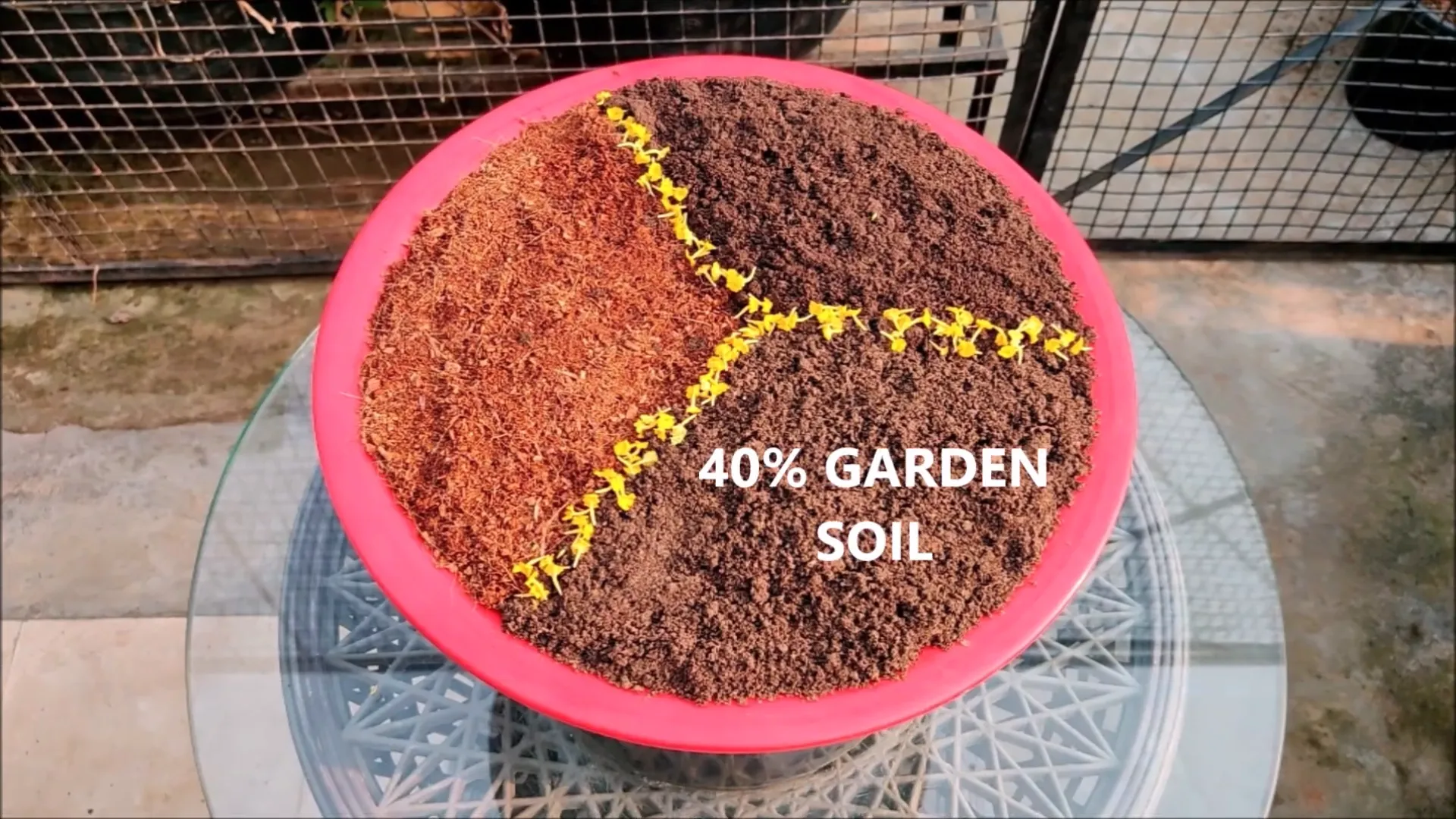
Planting the Seeds
When you are planting, place your seeds 1 to 2 inches apart and cover them with about 4 inches of soil. Lightly compress the soil over the seeds to guarantee sufficient contact. This is the most important step in order to achieve successful germination.
After placing the seeds in the soil, ensure they are well-watered. Opt for watering cans or a limited waterjet to avoid disturbing the soil. In normal favorable conditions, tomato seeds usually sprout in 8 to 10 days.

Germination and Care of Seedlings
Keep an eye on your seeds every day. Look for humidity and give water if the soil is dry to the touch. When your seedlings get some real leaves, it is the right time to think about moving them into bigger pots.
In order to ensure their robust and healthy development, give them adequate light during the seedling stage. The optimal daily exposure time is 12 to 16 hours.
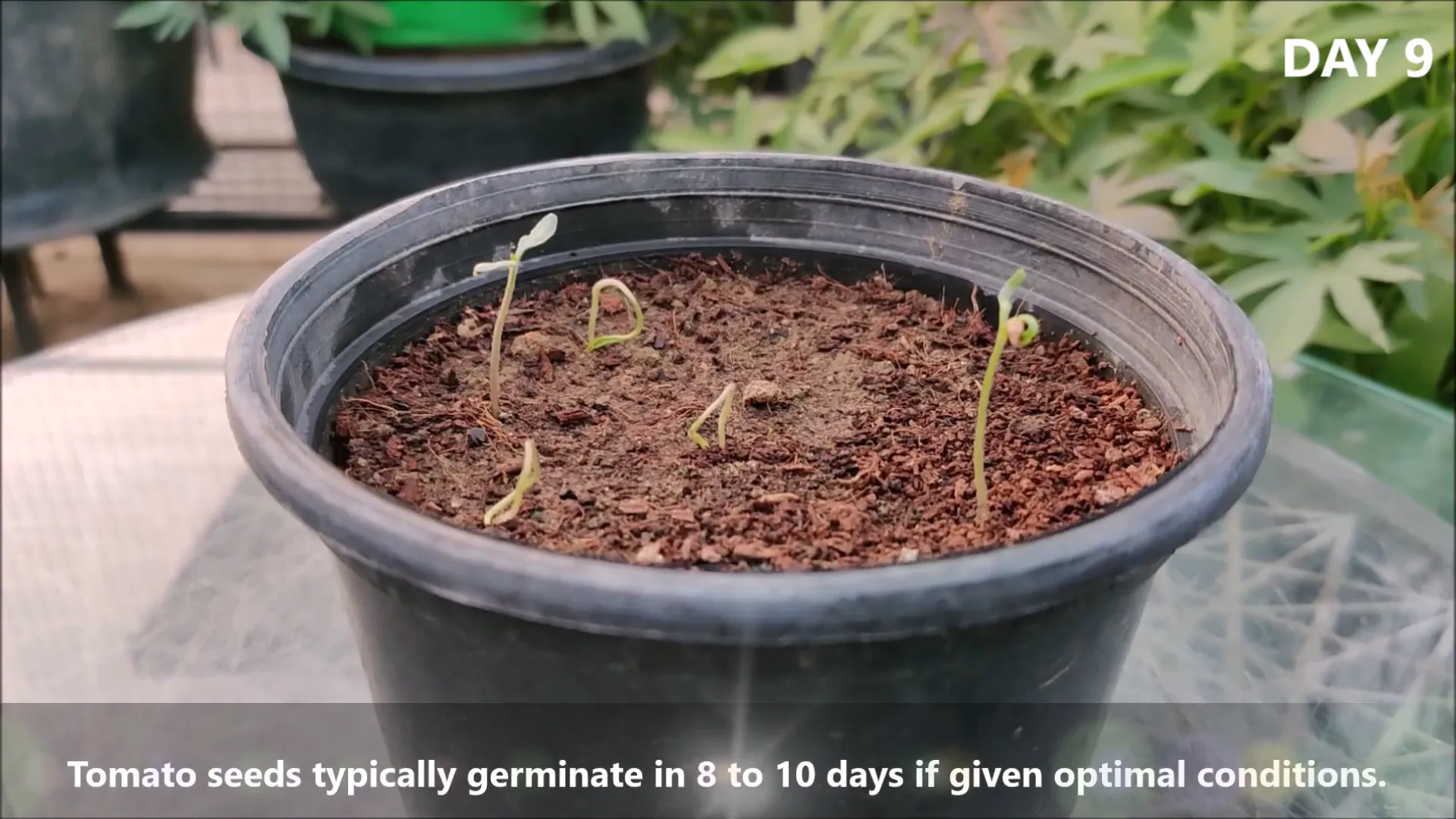
Transplanting Seedlings to Larger Pots
Transplantation is one of the most decisive steps in tomato cultivation. As soon as your seedlings develop a few true leaves, carefully release the root zone and take them off the ground with a little soil. Be careful not to pull from the stems to avoid damaging them.
A suitable container is the one that has a diameter of at least 20 to 25 inches and a depth of 16 to 20 inches. This dimension is proper for root expansion and provides good drainage conditions.
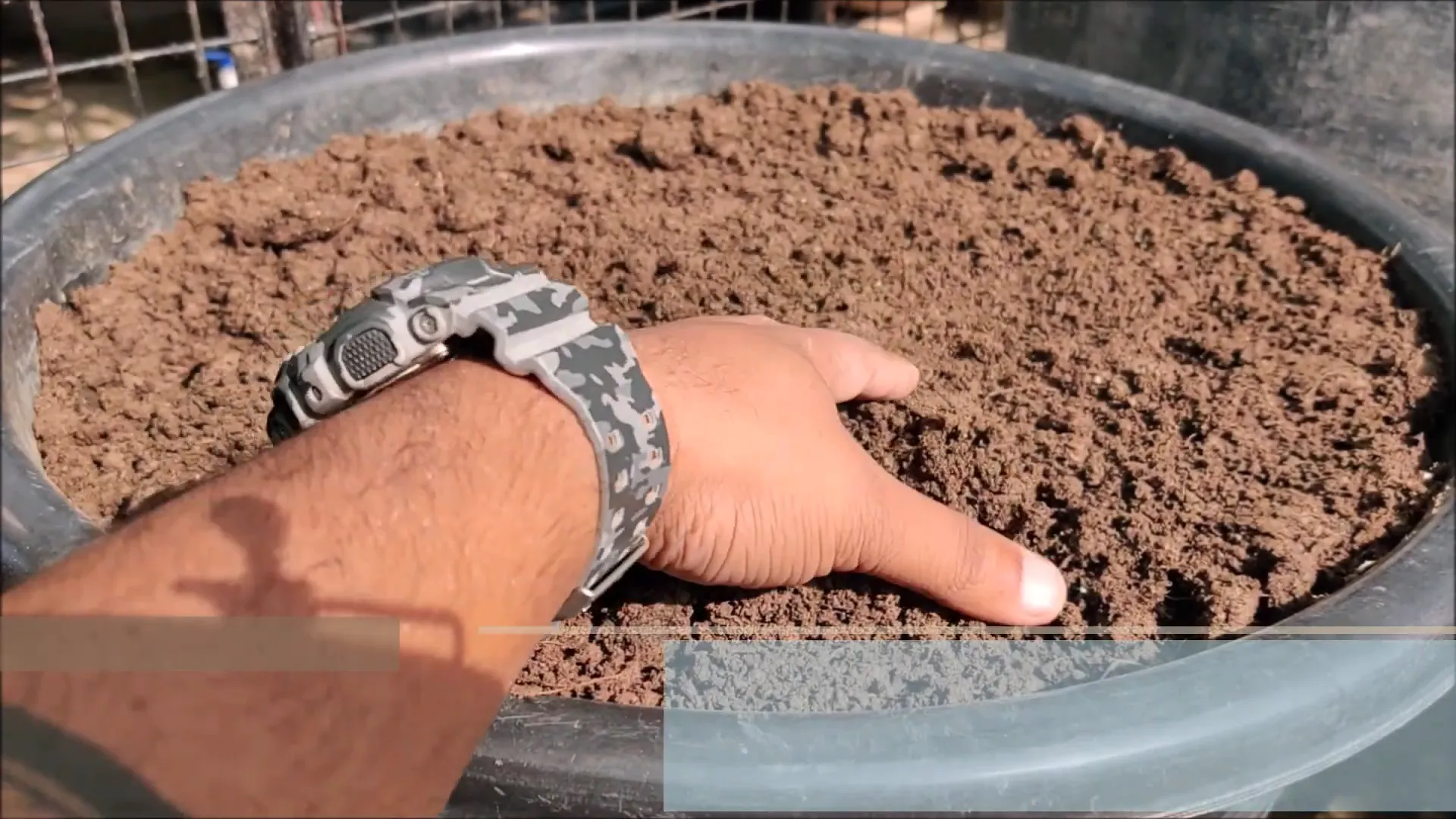
Choosing the Right Container
Choose containers that have drainage holes to avoid the problem of waterlogging. Tomatoes do their best in loamy and fertile soil. The best way to do it is to make a potting mix of garden soil and well-rotted manure.
Taking off the lower leaves of the seedlings prior to deeply planting them should be done before. This trick is for the encouraging formation of a strong root system.

Deep Planting Technique
Tomato plants have deeper roots and thus they are the only few vegetables to plant them deep. The healthy growth of tomato plants is achieved as a result of the stem forming new roots. Dig holes 8 to 10 inches in depth and place your seedlings with care.
To plant the seedlings, first cover them with soil and then lightly tap down the area with a hand on a compressed air pocket situation. This additional coating of soil ensures that they have good contact with the soil and therefore grow more quickly and in a healthier manner.

Watering and Soil Moisture Management
Once you have transplanted your seedlings, you should water them right away. To maintain the moisture level of the upper soil layer, water the plants every other day. Take note about the moisture level in the soil, because evaporation can happen very fast.
The most important factor in keeping your plants from getting stressed is proper watering practices. As the plants mature, regularly change your watering schedule in accordance with their water needs and the weather conditions.
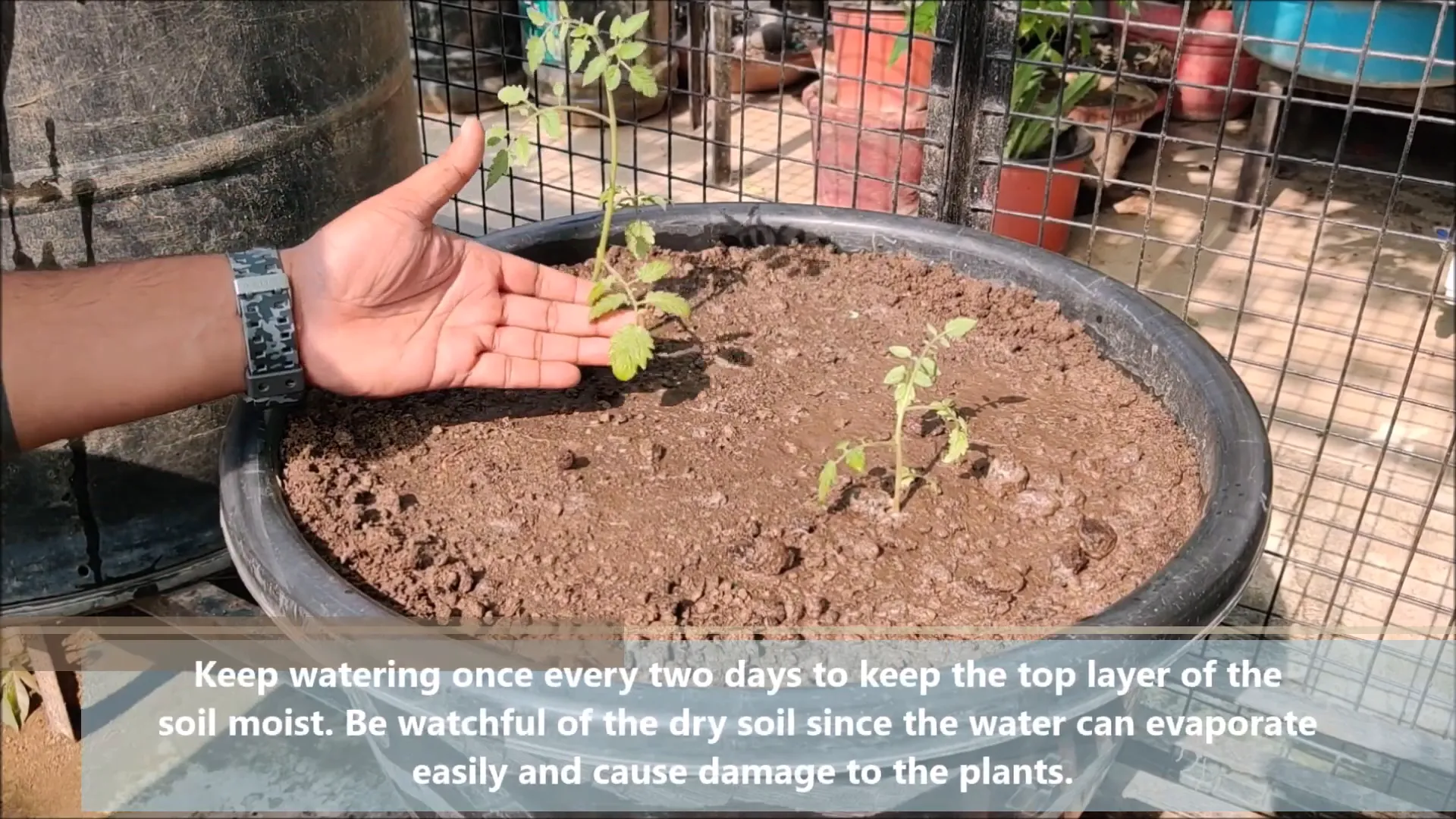
Staking Tomato Plants
During the growth of your tomato plants, they might require a supporting structure. You can make use of stakes to prop them up and protect them from breaking. Insert the stakes at 4 to 6 inches distance from the primary stem to create a space for growth.
Use twine or string to tie the plants to the stakes, making sure to add more knots as they increase in height. This technique will prevent the fruits from contacting with the soil and will thus, minimize the rot’s risk.
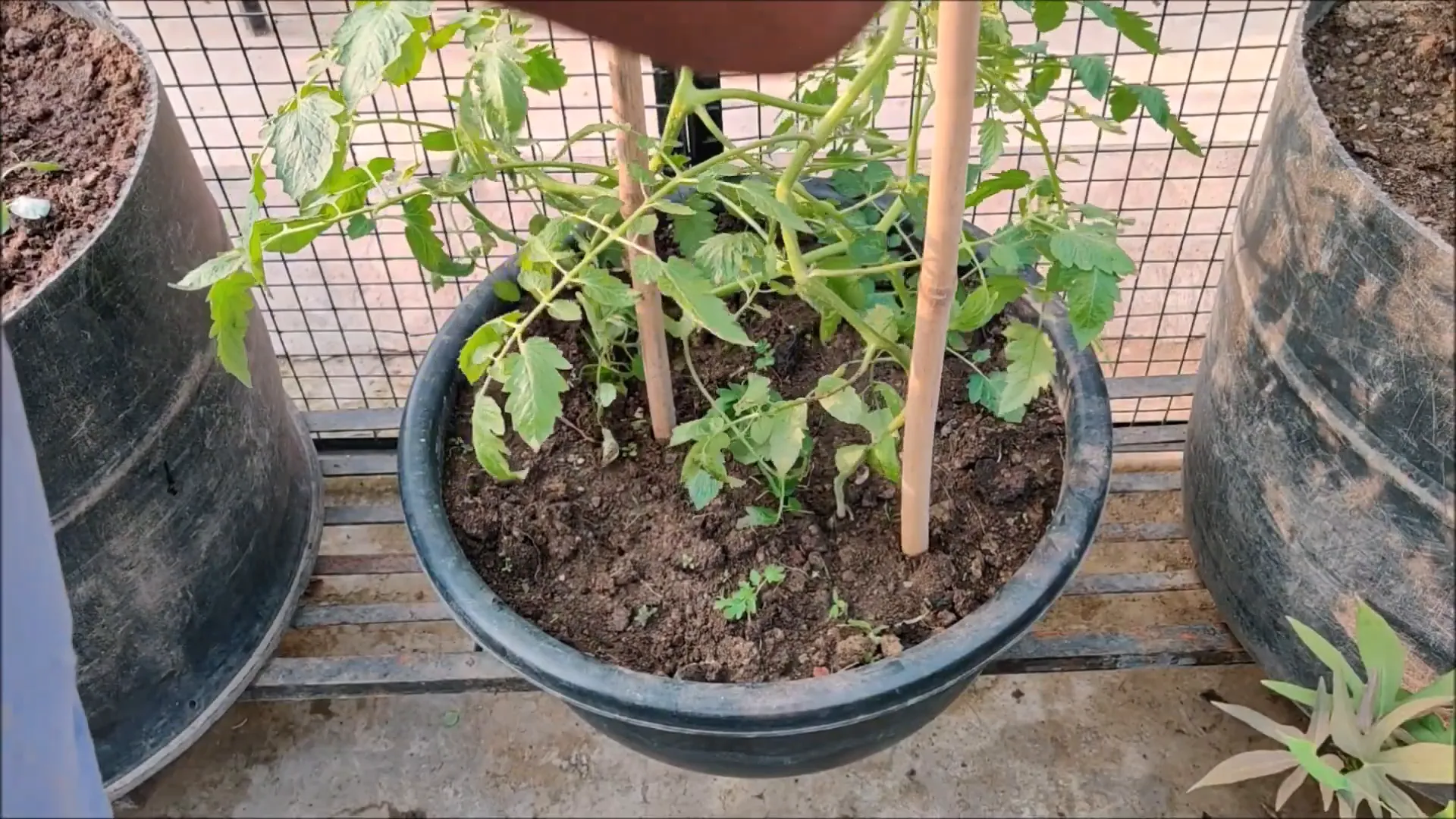
Maintaining Plant Health
Proper maintenance of tomato plants is essential for their growth and development. Inspect your plants frequently for pests and diseases. Finding these conditions in the early stages can be the difference between a good crop yield and a total loss and they also can help you to stop the future problems.
Trimming the yellowing leaves and picking off any dead or damaged foliage is a good practice. This not only enhances the air circulation in the area but also helps the plant to focus energy on its pristine growth.
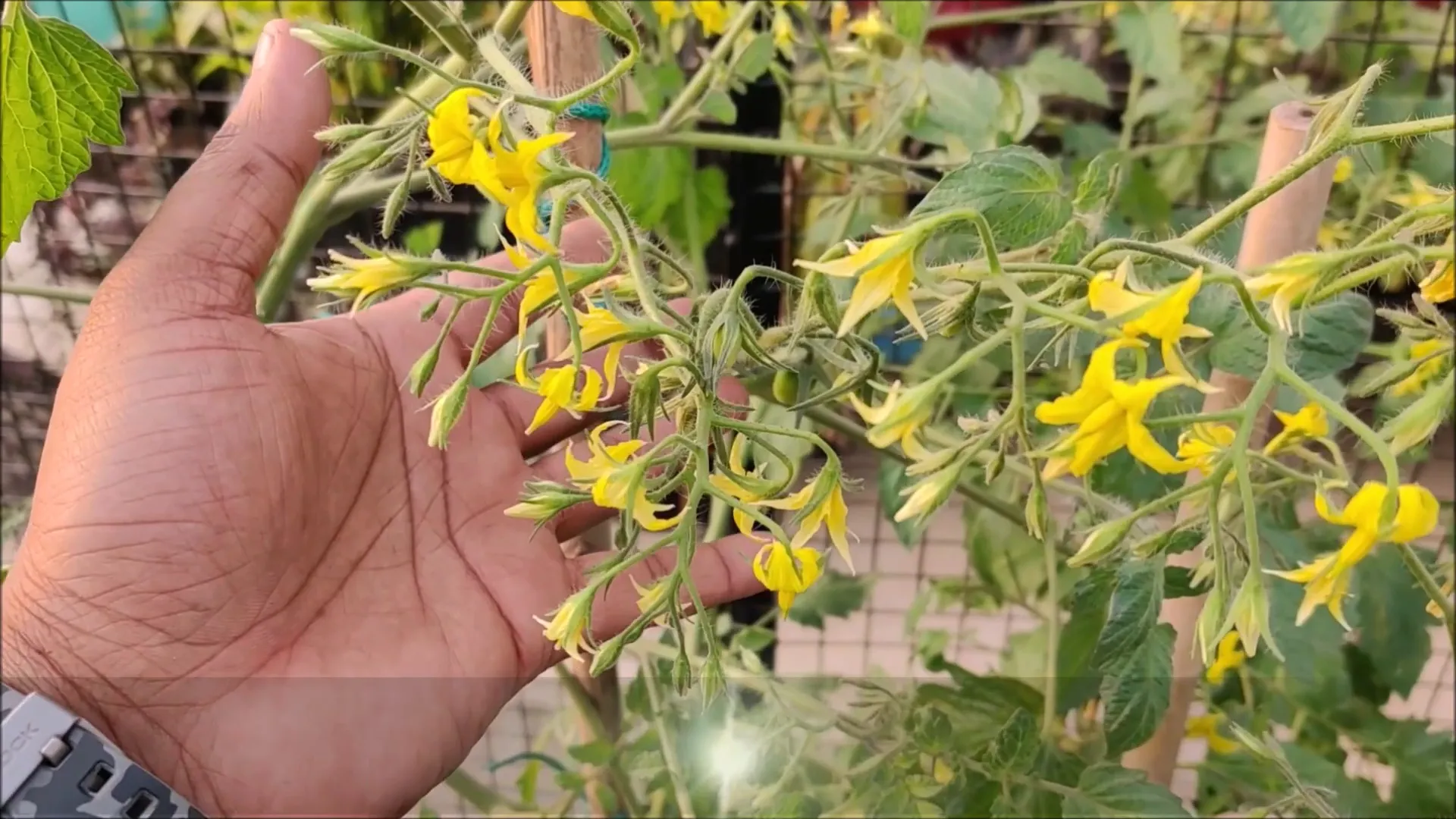
The Importance of Sunlight
Tomato plants need a very minimum of direct sunlight of 6 to 8 hours each day. Photosynthesis, the process that is mainly required for growth and is responsible for fruit production, is possible only through the intakes of light energy from the sun.
Arrange your plants in a place that can be directly exposed to sunlight. If you are growing them inside, think of utilizing grow lights to fully add to the natural light that occurs during shorter days.
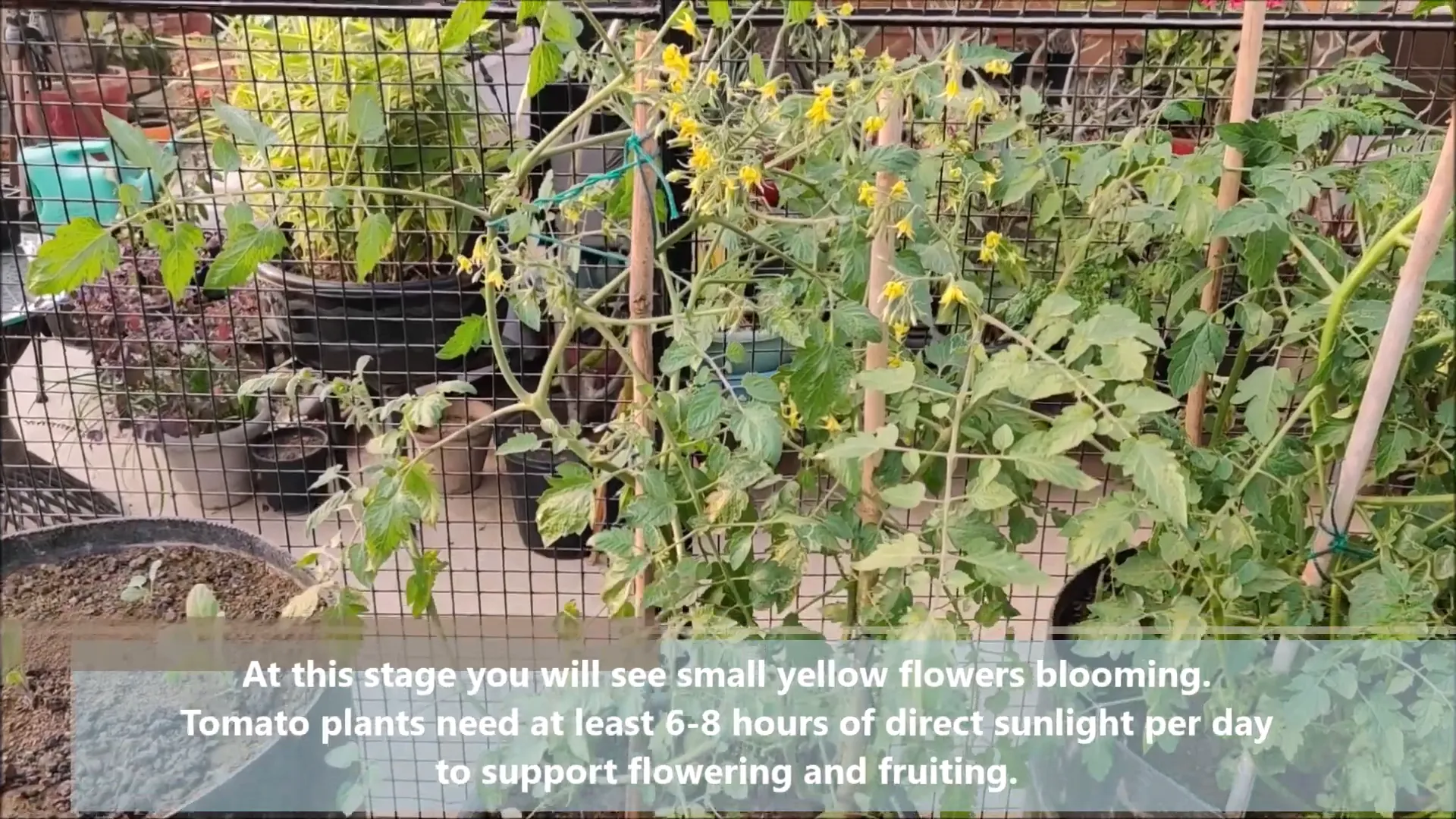
Fertilizing for Maximum Growth
Tomatoes thrive on a lot of nutrients being treated as heavy feeders, so for the best results, the plants should be adequately supplied with nutrients. All of the nutrients a tomato plant requires are found in a balanced fertilizer that is used to give plants vibrant foliage and a good crop.
The ideal method for achieving optimum results is to apply fertilizer around two to three handfuls for each plant, then mix it into the soil thoroughly, and finally, water it sufficiently. Do this every 15 to 18 days.
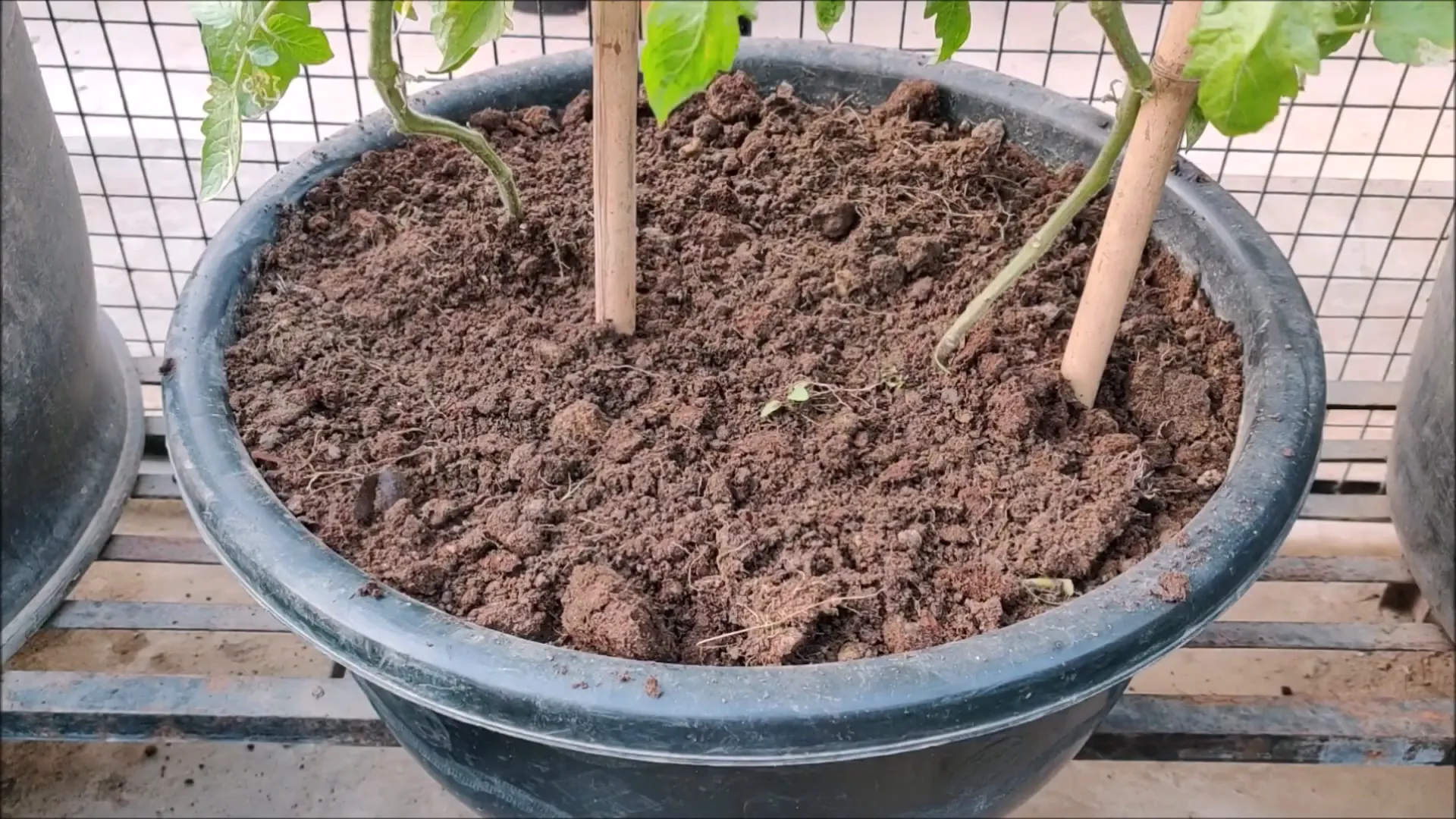
Monitoring Fruit Development
The successful pollination of the flowers will lead to the swelling of the base and thus the beginning of fruit development. The time frame in which you will be able to see small green fruits will depend on the variety of plants you have. This will happen in 50 to 60 days.
Keep a check on the size of the fruits as they develop. In a span of few weeks, these tiny green marbles will turn into larger and more defined shapes.
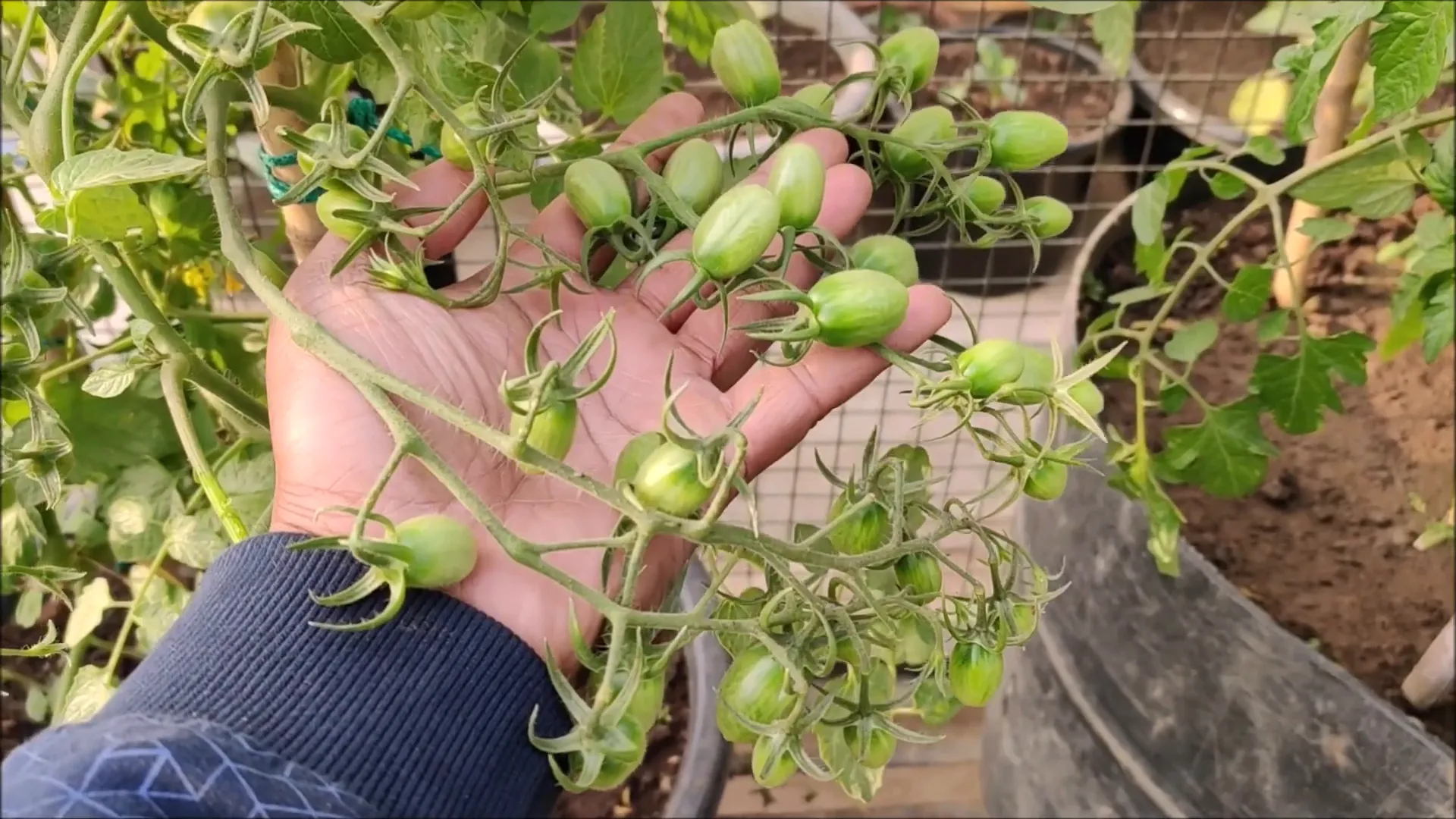
Common Tomato Diseases: Blossom End Rot
Blossom End Rot is one prevalent problem that can attack tomato plants. It shows in the form of dark patches at the base of the fruit, which suggests that the plant is deficient in calcium.
A good way to address this issue is to add organic compost, like eggshell powder, to the soil. This will really help your plants get adequate nutrients to avoid such a problem.
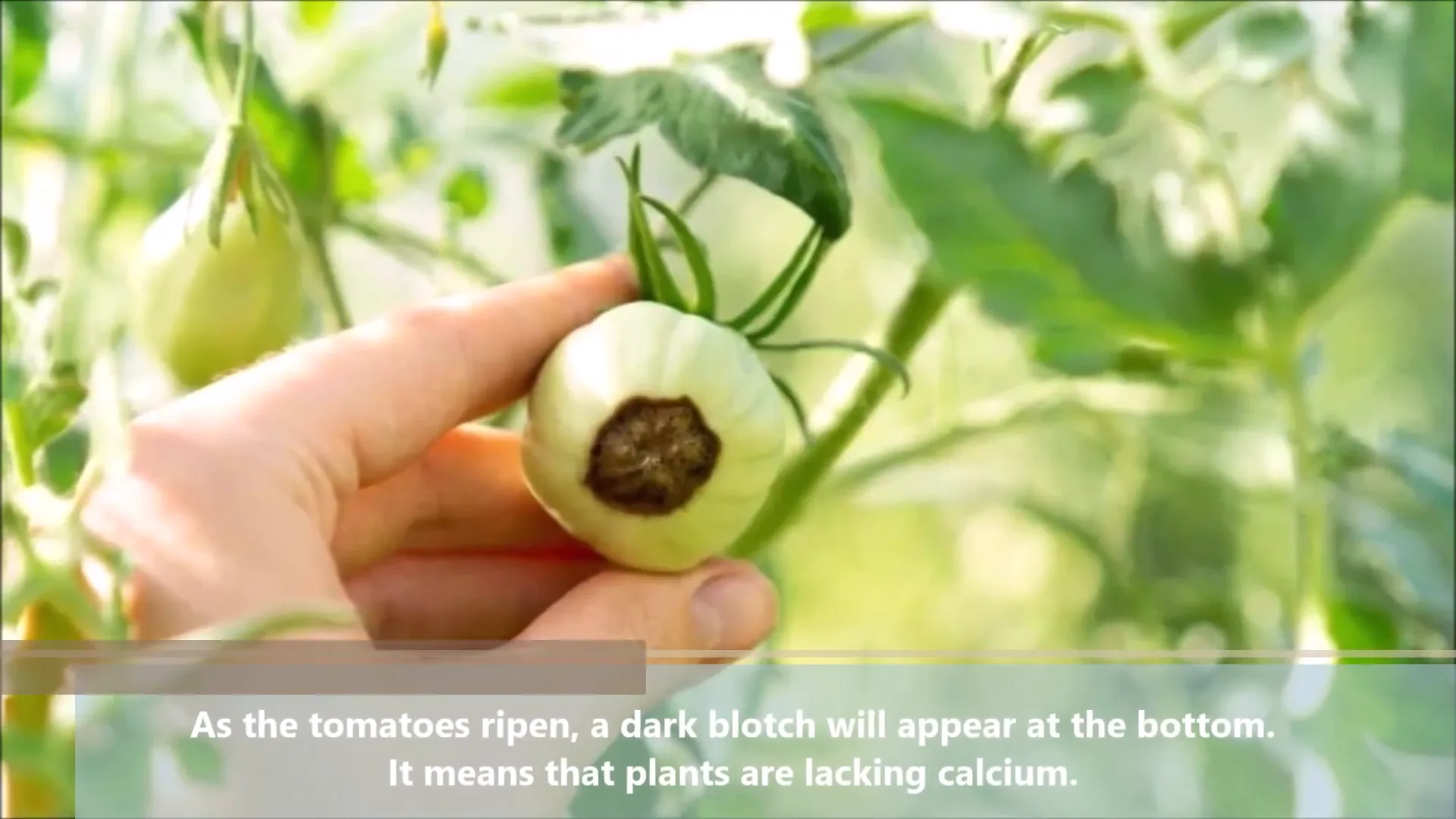
Recognizing Ripeness in Tomatoes
The most important factor of tomato ripening is the right timing for the harvest. To tell this, look for a color that is more saturated and a little soft when you push the skin gently.
The smell of ripening tomatoes will also be a little sour! Be careful not to leave them to ripen too long, as this will make them mushy.
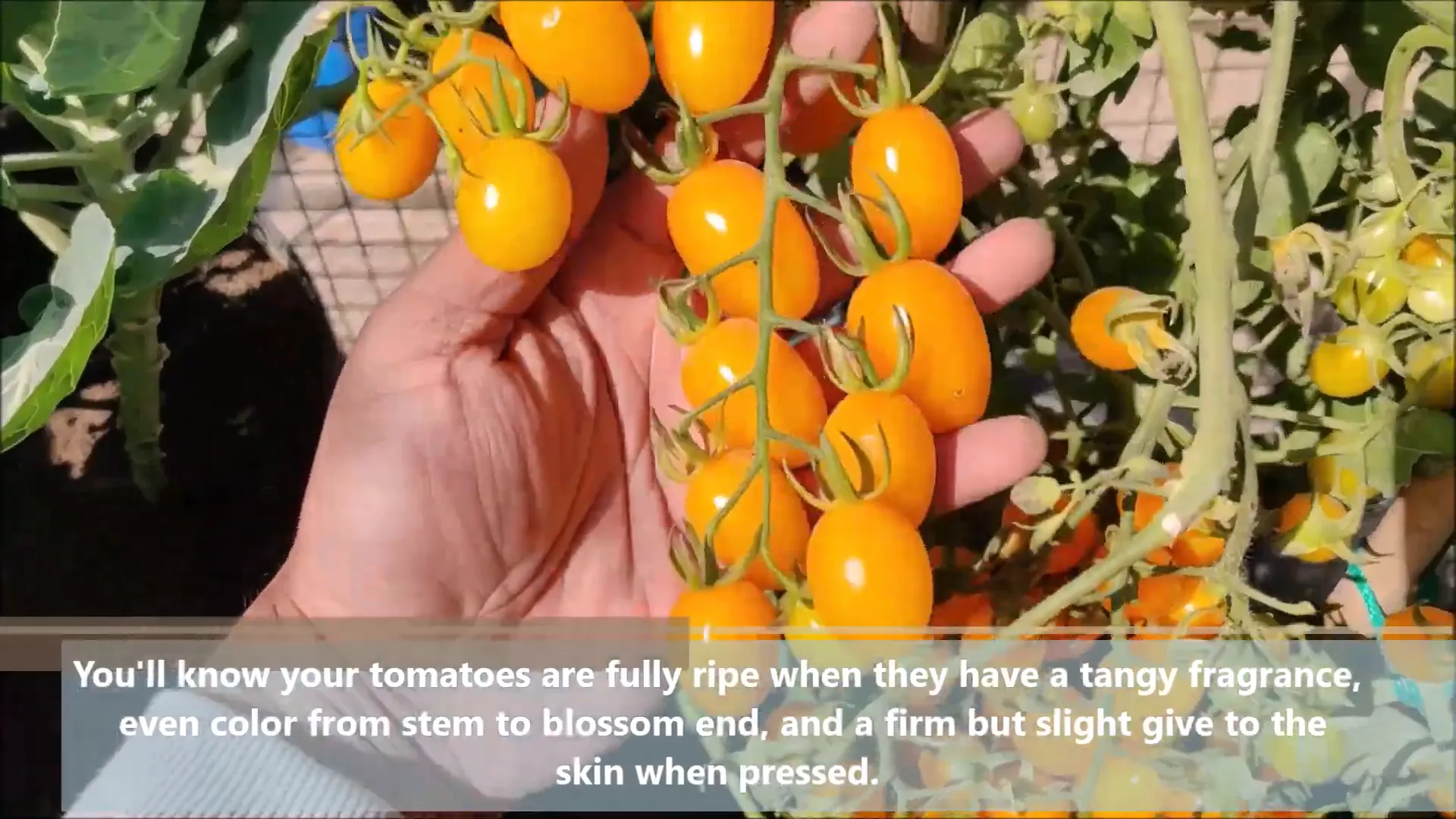
Harvesting Your Tomatoes
Not all tomatoes turn red at the same time. To guarantee you choose the ones that are fully flavored, it is better to collect them every 4 to 5 days.
While collecting, by all means do not forget to either twist or cut the fruit off the vine and make sure that the plant is not damaged. You are free to have the labor of your fruits in salads, sauces, or just as fresh as they are from the vine!
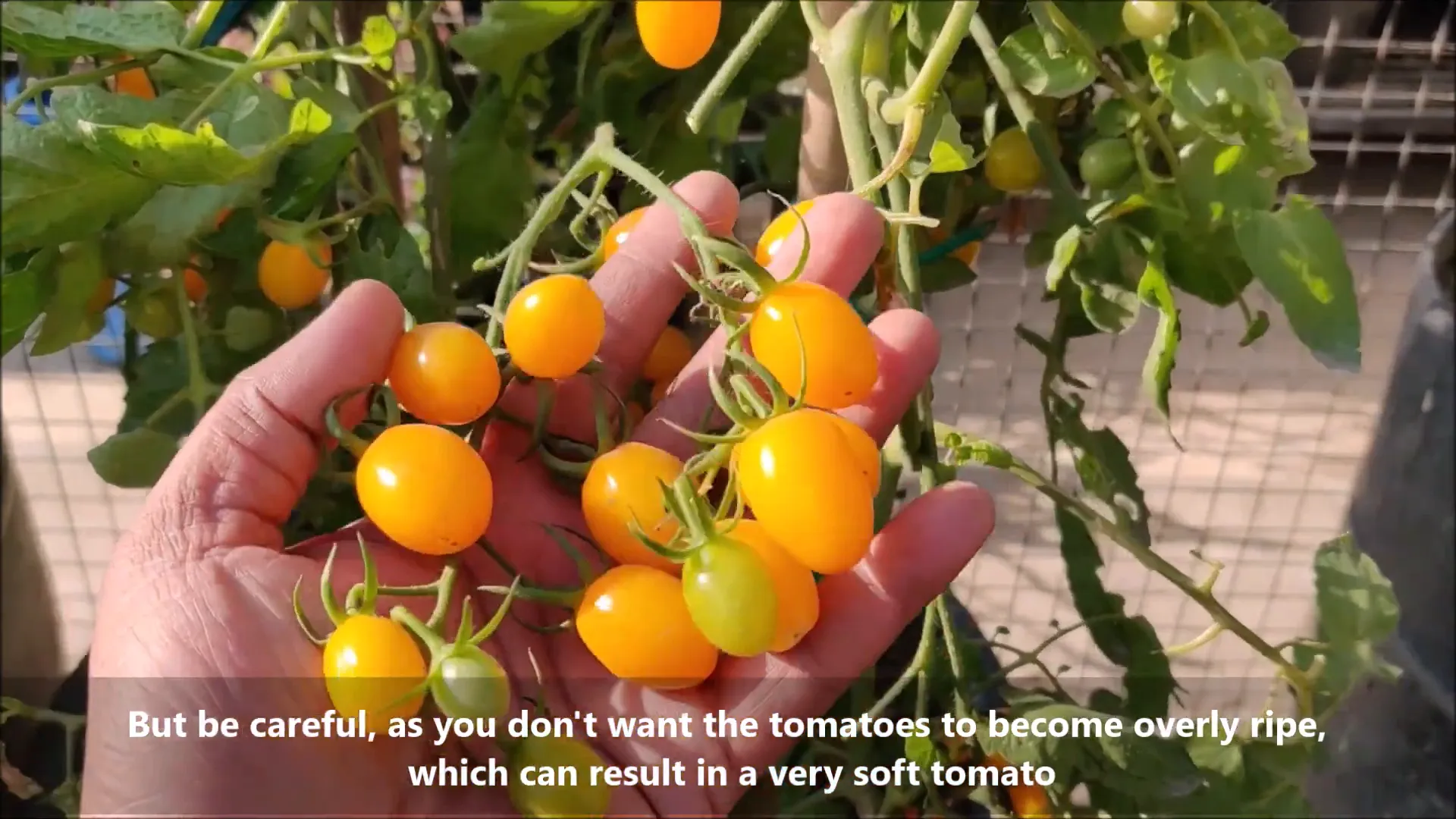
FAQ: Common Questions About Growing Tomatoes
- How often should I water my tomato plants? Irrigation should be done once in 2 days maintaining the upper surface of the soil damp because hot climatic conditions is a threat to the crops.
- What is the best fertilizer for tomatoes? A fertilizer which is balanced is the one that works best. For best results, it should be applied once every 15 to 18 days.
- Can I grow tomatoes in containers? Absolutely, it is essential to pick a container that is a minimum of 20 inches in diameter to provide enough space for the roots to grow properly.
- Why are my tomatoes not producing fruit? Insufficient sunlight and a lack of the necessary nutrients could be the inhibiting factors for fruit production. Therefore, it is crucial to provide them with enough light and nutrients.
- What varieties of tomatoes are easiest to grow? If you are a beginner gardener, cherry tomatoes and Roma tomatoes будут хорошими картошками, так как они являются соответствующими кущами., высокоурожайными.
For more gardening tips, check out our guides on growing dragon fruit, growing chillies, and growing strawberries.

